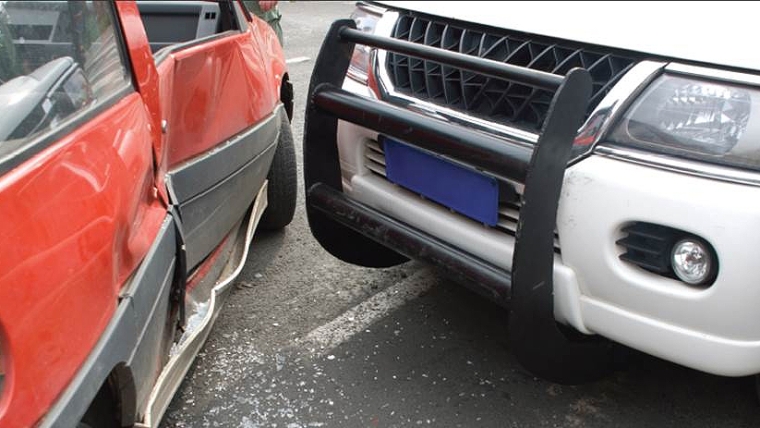
By now many of us will be familiar with the ongoing Right to Repair War that has been fought for decades between manufacturers and people and companies buying their goods.
It’s a long story of how technology, while bringing useful new features and improving the performance of existing products like cars, can also lock people out of the things they think they own. Not being able to independently maintain what you own is a bug bear for many, particularly if repairs are expensive and slow through dealers.
Reducing waste by fighting the pervasive and unsustainable “Throwaway Culture” is also putting pressure on manufacturers to stop designing products with built-in obsolescence.
Overseas, Right to Repair movements have sprung up in response to the situation, along with regulation and legislation safeguarding people who want to fix their gear instead of throwing it away and buying new.
France has introduced a Repairability Index for five product categories:,
- Smartphones
- Laptops
- Televisions
- Washing machines
- Lawnmowers
The index has been around since 2021 and takes into account how easy or hard it is to disassemble the product, the manuals for it, spare part availability and pricing, and product-specific information. Manufacturers are responsible for providing the information. Cheating risks big fines and of course, a reputational catastrophe for makers.
In its Fall [Autumn] Economic Statement last year, the Canadian government said it would amend the law “in order to prevent manufacturers from refusing to provide the means of repair of devices and products in an anti-competitive manner.”
The American states of Massachusetts and Maine have also enacted laws to ensure independent repairability for vehicles.
New Zealand ponders Right to Repair, but the law is in the way
In New Zealand the situation is different. Here, the balance drastically swung almost entirely in favour of rights holders in 2008 when the Copyright Act was amended by the Parliament.
One consequence of that law change is that it is illegal to bypass so-called technology protection measures (TPMs) under the Copyright Act of 1994. TPM is essentially digital rights management (DRM) software limiting access to systems, and/or the data they contain.
The penalty for “hacking” your way through them can be a fine of $150,000 or five years in prison, or an equally unpleasant mix of both. Not that there appear to have been any prosecutions for TPM tampering, as lawyer Rich Shera of Lowndes Jordan in Auckland said.
"I am also not aware of anyone having a librarian crack a TPM to engage in a permitted act (and I did survey librarians shortly after the provisions came in), so the whole regime is, by and large, a little visited backwater of copyright law, despite the heated arguments about it at the time it was being passed!” Shera added.
The legal TPM menace notwithstanding, New Zealand is thinking about Right to Repair, with WasteMINZ publishing a report in 2019 which focused mainly on minimising e-waste. Called Pathways for Right to Repair the report outlines market skews like repairs and spare parts for many devices being so expensive that it’s cheaper to dispose of the broken gear and buy new instead.
What’s apparent from the report is that many people who submitted to WasteMINZ feel uncomfortable about throwing things away instead of repairing them; however, in some cases they feel there are no options, as the repairable items are unaffordable to them.
Oh Deere, tractor hacking now?
A locally relevant story involves John Deere, which has copped much criticism for locking farmers out of their tractors with software, making field repairs without calling in authorised representatives from the company difficult and expensive.
One such John Deere TPM was broken with some deft hack-work by Australian researcher “Sick Codes” in 2022. He was able to get dealer-level access on the displays that control the tractors, and was even able to install the classic Doom video game on them.
John Deere has become a case study on the effects of TPM, and customers are now taking legal action against the tractor maker to ensure the Right to Repair.
As a related aside that adds nuance to the story, John Deere used the software locks to remotely disable tractors pillaged by Russians from Ukraine.
That John Deere has remote access to tractors is both great as it stopped the plundering Russian invaders, and worrisome as it means AgTech is now added to the list of critical cyber infrastructure to monitor.
US wants access to data for repairability
Now the United States Government Accountability Office (GAO), the federal auditor-general, has taken stock of how increasingly advanced vehicle technologies that transfer data directly over-the-air to car makers get in the way of consumers being able to use independent repair shops, which do not have access to the information.
The Vehicle Repair: Information on Evolving Vehicle Technologies and Consumer Choice Report, which was updated last week, noted it does seem to be the case that independent repairers face limits to their access to information, along with tools. In turn, this could make repairs more expensive and inconvenient for some consumers, GAO noted.
Technicians need manuals and wiring diagrams, vehicle health and repair data, and diagnostic tools to access them. While car makers have operated under a voluntary agreement in the US since 2014 to provide the information and tools for independent repair shops, that deal is now weakened.
This despite car makers and independent repairers agreeing to reaffirm the principles of the 2014 agreement last year.
Independent repair shops complained to the GAO that they were locked out of some diagnostics data, such as for the tyre pressure monitoring system, on specific vehicle makes when using third-party scanning tools.
Some shops could not program parts installed in many vehicles because they do not have the access to do that; other garages complained they could not use third-party diagnostics tools and instead, had to use ones sold by the car manufacturer for newer vehicles.
In some cases, the independent repairers had to take the customers’ vehicles to the dealerships to complete work that was impossible to do without full access to data.
It’s a thorny situation where car makers, for example, could have access to fault data through OTA communications, whereas independent repairers do not. This would necessitate customers to bring their vehicles into the independent shop for diagnosis, whereas dealerships would already have that fault data.
The US Federal Trade Commission will now look into the data access situation. FTC has been monitoring the repairability situation, and took action against a car maker in 2015 for telling vehicle owners they needed to use their dealerships for maintenance and repairs, or risk voiding their warranties.
This is something that New Zealand regulators need to keep a close eye on, as cars aren’t getting any less complicated. Consumers becoming locked in and only able to use dealerships for service and repairs could push up costs significantly.
8 Comments
Its great if the good guys can stop tractors... until the bad guys learn how too....
Louis Rossman talks at length about this.
I refuse to upgrade my TV’s software, they’re forcing their BS data collection without offering the right to refuse.
Dumb TV’s folks, back to the good ole days.
As for right to repair, well you must be a criminal if you have the temerity to fix it yourself!!!!!
The only way to win is to embarrass these companies in the open.
"Do you want fries with that?"
https://www.theverge.com/2022/7/13/23206999/car-subscription-nightmare-…
This would be dangerous as well as embarrassing:
https://www.theguardian.com/business/2023/mar/03/ford-reposses-patent-r…
https://www.motorbiscuit.com/dealership-shut-car-off-remotely/
Just fixed a Zip toaster that wouldn't stay down. But needed to buy a $47.90 set of 48 tool pieces to get the one particular head I needed to access it - because it didn't have flat or Philips screw heads but an obscure triangular shaped screw head, deliberately put there to make it harder for the likes of you and me to get into it. Once in, easy fix, just a bit of cleaning truth be told, to enable the electro-magnets to work and hold the bread receptacles down when pressed down.
Oh well, am now better set up for the next time a manufacturer uses odd screw head sizes to try and keep me out.
Cost of a new toaster? $39.99
The irony is you'd have probably found the triangular shaped head, much like a square (Robertson) screw, was much easier to operate.
Had ZIP used philips/pozi drive you'd no doubt have stripped the heads on removal.
"But needed to buy a $47.90 set of 48 tool pieces to get the one particular head I needed to access it - because it [had] an obscure triangular shaped screw head"
Encountered something similar. It's amazing what you can do with a metal file and a 6" or 4" nail. ;-)
If we're taking our cues from the liberal Trudeau government we are in trouble..
I think policymakers should be aware of what rules are in place internationally as a benchmarking exercise only
but that does not excuse us from thinking and developing our own rules and not simply copy-pasting others... which is lazy and inherently leads to unexpected and unwanted 2nd and 3rd order consequences
Accurate and humorous slide that concisely can describe issue
Also for good teardowns and repair guides https://www.ifixit.com/
Printer companies have been notorious for forced obsolescence. Actually going so far to program in set dates for product failure forcing a new purchase.
Then there was the classic cases of iphones refusing valid licensed parts repair and battery replacements with software coded so the phone is intentionally bricked or at least severely slowed to the point apps no longer function etc.
Software has long been an excellent tool to manage and ensure forced obsolescence. Originally it was quite blatant (set dates for failure which was picked up by tech users) to preventing techs from inspecting and checking/maintaining hardware, updating and more hidden moves in software that amount to the same thing.
Hence why many in tech have loaded other OS on macs to get another 5-10 years of functionality out of the devices when apple refuses to allow them to operate most the main apps and update. That kind of stuff is disallowed and made illegal because the companies forcibly want to have users repurchase every couple to few years and clearly have greater lobbying power then consumers. Only through many court cases has apple been forced to release its tight grip around the throat of consumer devices.
Nowadays items have so much put in to disallow any repairs, cleaning or battery replacement, and parts so fragile the break even with infrequent normal use over a couple of years. Including laptops sealed with glue or propriety screws so any attempt even to clean fans or replace hard drive & memory is a nightmare you are blocked from. Ifixit is good as a site to review devices before purchase to check what hardware internals and repair is like.

We welcome your comments below. If you are not already registered, please register to comment
Remember we welcome robust, respectful and insightful debate. We don't welcome abusive or defamatory comments and will de-register those repeatedly making such comments. Our current comment policy is here.